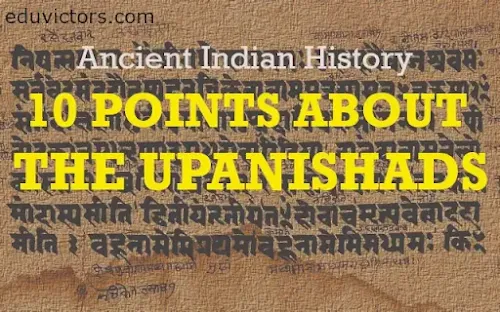Ancient Indian History: 10 POINTS ABOUT THE UPANISHADS (#upinashds)(#eduvictors)(#IndianHistory)(#vedanta)
Ancient Indian History: 10 POINTS ABOUT THE UPANISHADS
 |
| Image Credits: Ms Sarah Welch (commons.wikimedia.org) |
1. The Upanishads are commonly referred to as Vedānta. These are philosophical texts. that represent the spiritual core of Hinduism.
2. It is believed that the Upanishads were composed by saints between 800 B.C. and 500 B.C.
3. Word Upanishad is a combination of 2 Sanskrit words - ‘upa’ and 'nishad' meaning to sit down near someone (Guru) and attain secret knowledge.
4. There are 108 Upanishads. The important 13 are:
Brhadaranyaka Upanishad
Chandogya Upanishad
Taittiriya Upanishad
Aitereya Upanishad
Kausitaki Upanishad
Kena Upanishad
Katha Upanishad
Isha Upanishad
Svetasvatara Upanishad
Mundaka Upanishad
Prashna Upanishad
Maitri Upanishad
Mandukya Upanishad
5. These are anti-ritualistic discussing theories of creation of the universe.
6. These define the doctrine of action with the goal to attain salvation through meditation and self-control.
7. The famous doctrine of Adwaitavad is ascertained in the Upanishads.
8. The national statement “Satyameva Jayate” has been taken from Mundaka Upanishad.
9. Vrihadaranyaka is said to be the oldest Upanishad.
10. All the works are known as Shrutis which means revelation realized through direct experience by the ancient sages.
UPANISHADS: One line summary of the 10 major Upanishads
ISHA: Karma without attachment.
KENA: God exists behind the natural process.
KATHA: Immortality is simply union with God.
PRANA: Discourse on Prana.
AITAREYA: Creation and pure consciousness.
MUNDAKA: Knowledge and Wisdom
TAITTIRIYA: Thou art Brahman.
MANDUKYA: Meaning of AUM
CHANDOGYA: Tat Tvam Asi.
SWETASVATARA: Meditation the way to God
👉See Also:
History Notes (Part-1) Eurpoean Traders To India (Before 1857)History Notes (Part-2) East India Company Rising to Power




No comments